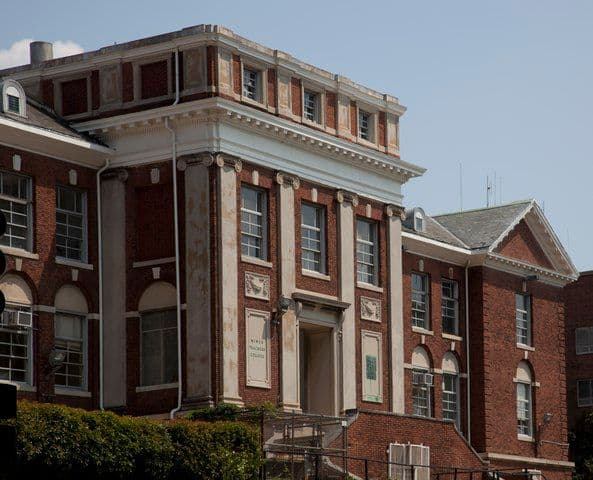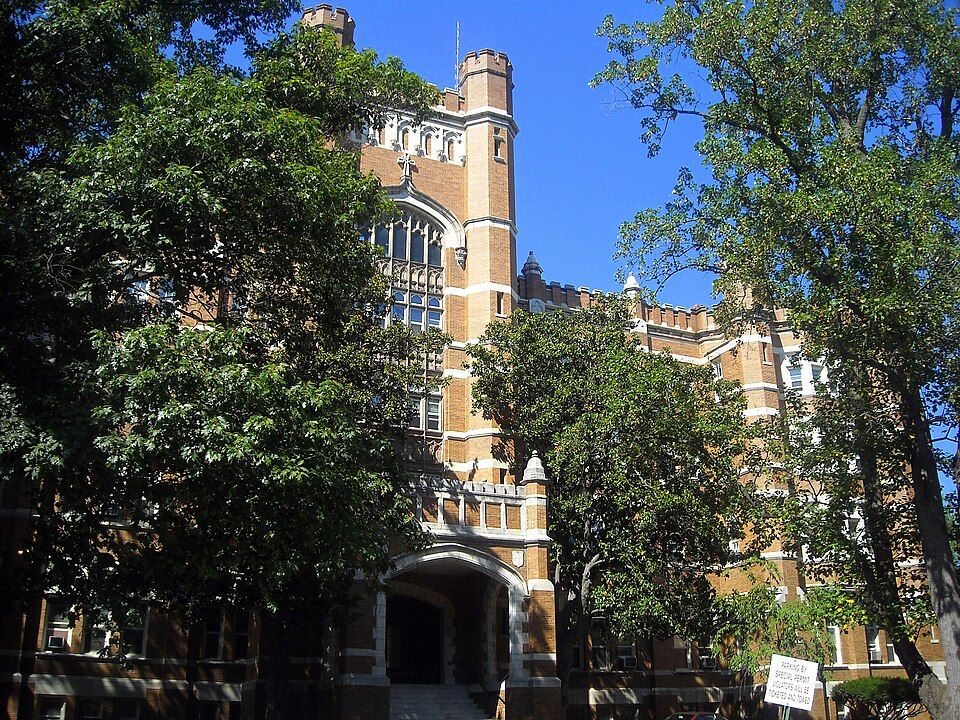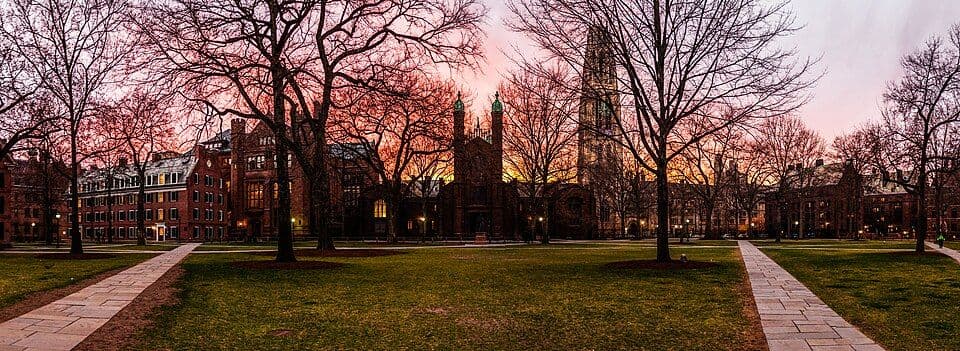
Unlocking Success: A Step-by-Step Guide on How to Get into Howard
Considering an HBCU for your college experience? Howard University is one of the most well known, ranking #2 among HBCUs and in the Top 100 nationally. IVY’s college admissions experts share critical information for getting into Howard including admissions requirements and characteristics of students who would thrive there.

By Carol M. Highsmith - Library of CongressCatalog
In a college admissions landscape dominated by rankings and prestige, it’s easy to overlook the institutions that have long nurtured leadership, scholarship, and social change. But for students seeking more than a name, Historically Black Colleges and Universities (HBCUs) offer something irreplaceable - mission, legacy, and impact. And among them, one school stands at the center of gravity: Howard University.
Known affectionately as The Mecca, Howard is a cultural and intellectual powerhouse. It has produced Supreme Court justices, Pulitzer Prize winners, Emmy-award-winning creatives, and heads of state. Its alumni are known to walk halls of power while staying rooted in community. For students ready to engage, challenge, and grow, Howard offers one of the most unique undergraduate experiences in America.
This blog is for the student who’s curious about what it really takes to get into Howard, and how to stand out with intention. It applies the Morganelli Method - created by IVY’s Director of College Admissions - to Howard’s admissions process, helping you shape a strong application and a story that belongs at The Mecca.

Understanding Howard University Admissions
Howard University’s academic prowess is not new: it is an institution known for its continued pursuit of excellence. While no-one can pinpoint the exact moment it first became known as “the Mecca” for black academic excellence, the first written instance dates back to 1909. In this century, it became the first HBCU to win a Department of Defence contract, and is the first - and only - HBCU to receive R-1 status, designating it as top research institution. Moves like these are shaping the admissions landscape at Howard.
How Hard Is It to Get Into Howard University? Howard University Acceptance Rate
In the most recent admissions cycle, Howard received over 37,000 applications for its undergraduate programs, marking a steep increase from prior years. Its acceptance rate now hovers between 30% and 35%, with top programs, such as Political Science, Pre-Medicine, and Communications, becoming even more competitive. Once considered a “safety” school, Howard expects purpose as well as academic performance from its students, and is moving up the ranks of competitiveness.
Academic Requirements
Let’s talk numbers.
Howard University GPA Requirements
The average admitted student has a 3.66 unweighted GPA, with a middle 50% range between 3.4 and 3.8. Do not let the fact that Howard isn’t an Ivy fool you - rigor matters here. Past competitive applicants have challenged themselves with AP, IB, Honors, or Dual Enrollment coursework, especially in their intended major.
Howard University SAT & ACT Scores
Howard is test-optional. As we’ve discussed in other admissions blogs, however, test-optional does not mean test blind. Strong test scores can and do strengthen applications at test-optional schools, and Howard is no exception.
The middle 50% of admitted Howard students score:
- SAT: 1060–1270 (Composite)
- ACT: 20–28 (Composite)

The Application Process
Holistic Review Process
Like most US institutions, Howard considers more than just academics. Essays, extracurriculars, recommendations, and demonstrated interest all play a meaningful role in who they accept. Students who show a clear connection to Howard’s mission - through service, leadership, or identity-driven work - stand out.
Deadlines & Strategy
Howard offers Early Action, which is non-binding but demonstrates deliberate interest. While applying early doesn’t guarantee admission, it does allow high-fit students to signal serious intent, especially when supported by a well-aligned narrative.
As The Mecca continues to grow in stature and selectivity, applicants must come prepared with strong grades, test scores, and a story. The Morganelli Method - and Ivy Tutors Network - sees Howard not as a reach or a fallback, but as a deliberate, strategic choice for students who are ready to lead.
Understanding Selectivity and Howard’s Competitive Edge
Howard’s rising selectivity is reshaping the admissions conversation for students interested in attending. With more applicants and heightened academic expectations, students now need a strategy in addition to traditional academic achievements. That begins with understanding how admissions decisions differ by program and how your application can show both preparation and purpose.
Program-Level Competition
Howard’s most sought-after majors - Political Science, Pre-Med, and Communications - draw thousands of applicants annually. These departments are tied to the university’s historic strengths and national reputation. As a result, applying to these programs without a clear intellectual focus or supporting evidence can weaken even a strong academic profile.
This is where clarity matters. Howard’s admissions officers want to see more than interest: they’re looking for alignment between your experiences, your intended major, and the kind of student who succeeds in their academic community.
Narrative Strategy at the Department Level
Using the Morganelli Method, we encourage students to explore every available angle: not just the major itself, but the narrative scaffolding behind it. Strong applicants demonstrate their interest by showcasing curiosity through past engagement, posing a thoughtful research question, and predicting where their investigation might go next.
If you’re entering 9th, 10th, or 11th grade and are wondering what it looks like to align your high school experience with an intended major or program of study, check out our blogs on mistakes to avoid (and what to do instead) as a freshman, sophomore, and junior.
In some cases, a student can strengthen their application by selecting a major that reflects a more precise or underexplored angle. A pre-med student might apply under Nutritional Science, emphasizing food justice or health access. A student with civic interests could frame their story through Public Policy or Sociology, especially if they’ve already participated in conversations in those spaces.
This kind of narrative tailoring doesn’t just help you get in, it sets you up to contribute once you arrive.
The Role of the College of Arts and Sciences
For many applicants, the College of Arts and Sciences (COAS) is the primary entry point into Howard. As the university’s largest undergraduate college, COAS houses a wide range of majors, including Biology, Political Science, Sociology, English, and Psychology, and serves as the academic home for many of Howard’s most competitive programs.
Because of its breadth, COAS offers flexibility for students whose interests span multiple disciplines or whose narrative connects intellectual and community-based work. For applicants using the Morganelli Method, this college often provides the widest narrative runway to demonstrate curiosity, alignment, and academic readiness.
What Howard Looks For: Mission-Driven Excellence
Howard’s admissions process is holistic, but that doesn’t mean it’s vague. The students who stand out are the ones who understand what the university values. They must show, through action and voice, that they’re already living out those values.
Howard looks for academic readiness, yes, but also purpose. Students who thrive at The Mecca are those who connect learning to leadership, identity to action, and achievement to service. Weave this mindset into your application rather than planning to develop it after you’re admitted.
Traits of a Competitive Applicant
The most compelling Howard applicants tend to share a few key characteristics.
- Community-Oriented Leadership: Whether through advocacy, mentoring, organizing, or creative work, strong applicants show that they’ve already made meaningful contributions in their communities, and that they’ll bring their community-focused attitude to campus.
- Clear Intellectual Curiosity: Students who use their high school years to investigate big questions - especially those tied to social equity, cultural identity, health access, or public discourse - often stand out. Howard values applied curiosity, rather than the abstract curiosity valued at institutions like UChicago, Brown, and Yale.
- Narrative Cohesion: From major selection to essay tone to extracurricular activities, there should be a throughline. Howard admissions readers are looking for applicants who have reflected deeply on who they are, what they care about, and how that connects to what they’ll study and do at the university.
- Alignment with Howard’s Mission: This doesn’t mean you need to reference the university’s mission statement verbatim. But your application should make it clear that you are coming to Howard not just for opportunity, but for responsibility. Students who communicate this implicitly - through their research, writing, or leadership - often earn a second look.
Show, Don’t State
Many students make the mistake of telling Howard why they care about justice, representation, or change, while failing to show how they’ve acted on those convictions. In the Morganelli Method, we ask students to demonstrate alignment through evidence: A published op-ed, a school-wide event, a neighborhood initiative, even a thoughtful research question grounded in local context, all of these show who you are and what you’re capable of contributing.
Want expert advice on your ethos (aka throughline)? Chat with one of our college admissions counselors.
Who Thrives at Howard: Campus Culture and Student Fit
Howard prides itself on being a community with momentum, and not “just” a college. Students often describe campus life as high-energy, expressive, and deeply connected. From student-led movements to Greek life, academic showcases to fashion runways at the Yard, Howard is a place where presence matters. Students are expected to show up, speak up, and step forward.
But not everyone thrives in that kind of environment. Understanding who does well at Howard - and if you’re that kind of person - is just as important as knowing how to get in.
The Students Who Flourish
Howard serves students who are purpose-driven and socially engaged, but more specifically, it’s an ideal match for those who:
- Want to lead and contribute in public, visible, or collaborative ways. Whether it’s organizing a campus event, writing for the student paper, or launching a nonprofit, Howard rewards initiative and energy.
- Are comfortable navigating complexity. From administrative hurdles to spirited classroom debates, students who can advocate for themselves and stay focused in dynamic environments tend to thrive.
- Crave intersectionality in their education. Howard’s intellectual culture invites students to connect race, gender, policy, science, and the arts. Often in the same conversation. If you're someone who reads widely and thinks across disciplines, you’ll likely find your rhythm here.
The Students Who May Struggle
Some students arrive at Howard expecting a quieter, more individually paced experience, or a system that prioritizes structure. These students may find themselves overwhelmed or frustrated if they:
- Prefer minimal community involvement or low-profile engagement.
- Rely heavily on predictability or highly polished administrative systems.
- See college primarily as an academic exercise rather than a platform for personal, cultural, and social growth.
This doesn’t mean that introverts, planners, or focused academics won’t do well. But success at Howard often depends on flexibility, resilience, and the ability to engage with the community in meaningful ways. These are skills that can be learned, of course, but you should also consider if you want to learn them in the midst of everything else you’ll be learning and doing for the first time in college.
Understanding Howard’s Cultural Identity
Howard is a Historically Black University - not just in its history, but in its mission. That distinction matters.
Students don’t need to identify as Black to apply or to thrive at Howard. But they do need to bring respect for the institution’s cultural roots, and a curiosity for how those roots shape everything from coursework to campus life. Howard is deeply invested in studying the Black intellectual tradition and expanding it. The students who do best here are those who see that as an opportunity, rather than a backdrop.
For Black students, that often means studying in a space designed for your voice to be centered. For non-Black students, it means entering that space with humility and awareness. Come ready to contribute thoughtfully, not just extract from its greatness.
Howard has always welcomed students who are serious about impact. Understanding the school’s cultural identity is part of showing that you’re ready to contribute once you arrive.
Is Howard Your Next Step?
In a landscape where students are often told to chase rankings, Howard invites you to do something else entirely: chase purpose.
This is not a school you apply to on a whim or list casually as a “safety.” Howard is for students who are ready to lead with clarity, contribute with conviction, and bring their full selves to the table - intellectually, socially, and culturally.
In return for your dedicated investment, Howard offers an education and a foundation rooted in excellence, shaped by legacy, and designed for impact.
At Ivy Tutors Network, we see Howard as one of the most strategic, mission-centered choices a student can make. If your story is built on action, alignment, and intention, then The Mecca just might be your match.
Schedule a free consultation with our college admissions team today if you’re looking for support in your college admissions journey, or consider our most popular package, BluePrint.




